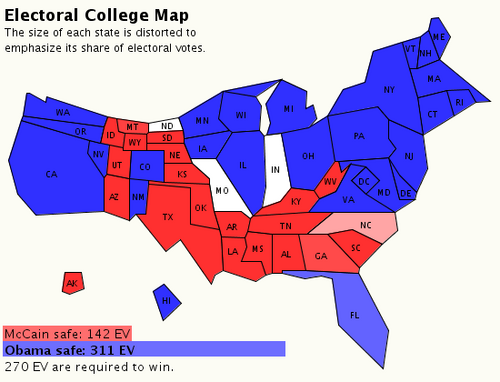- Mr. Pileggi would have Pennsylvania join two other states, Nebraska and Maine, in abandoning the winner-take-all system. One electoral vote would be awarded for each of the state's Congressional districts, and the winner of the popular vote would receive two more.
- Even though Democrats have won Pennsylvania in the last five presidential elections, the state remains competitive.
- In two states, PA and WI, GOP legislators have introduced bills that would change how electoral votes.
- Pennsylvania's 12 publican U.S. representatives suddenly became nervous about any possible danger to their re-elections that the change in electoral vote apportionment might pose and then sent word tostate legislators to “cool it.”
- Nebraska Republicans are looking to return to winner-take-all.
- The two electoral votes that go to the statewide winner won’t motivate candidates sufficiently to campaign statewide to win them.
- The concept of awarding electoral votes by congressional district has been around since the 1950s.
- Under the current system, the most important part of the Democratic campaign strategy in Pennsylvania is to try to maximize turnout in Philadelphia and southeastern counties.
- If the congressional district plan had been in place in Pennsylvania in recent presidential elections, it would not have affected the outcome of any presidential election.
- By early September, GOP Gov. Tom Corbett and the state House and Senate leaders, Mike Turzai and Dominic Pileggi, both Republicans, had all expressed their support for the idea.
Questions:
- Why, all of a sudden are changes being proposed?
- What differences to the Democrats and Republicans have on these changes?
- Are certain states almost joining together and alienating from other states?
- How did this plan come about?
- Is it likely the electoral college will change in the near future?

Sources:
No comments:
Post a Comment